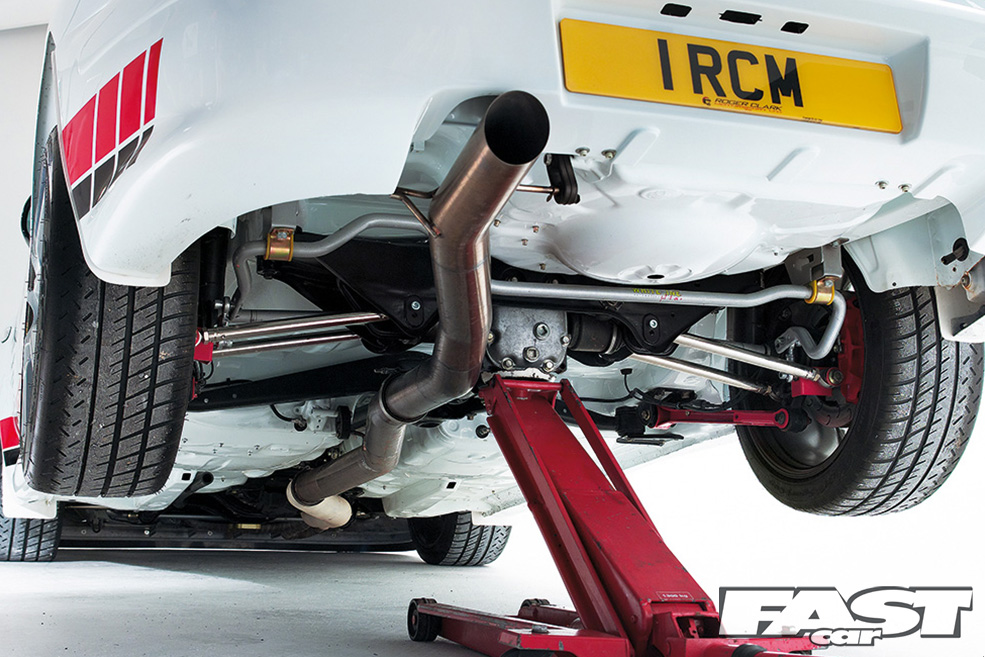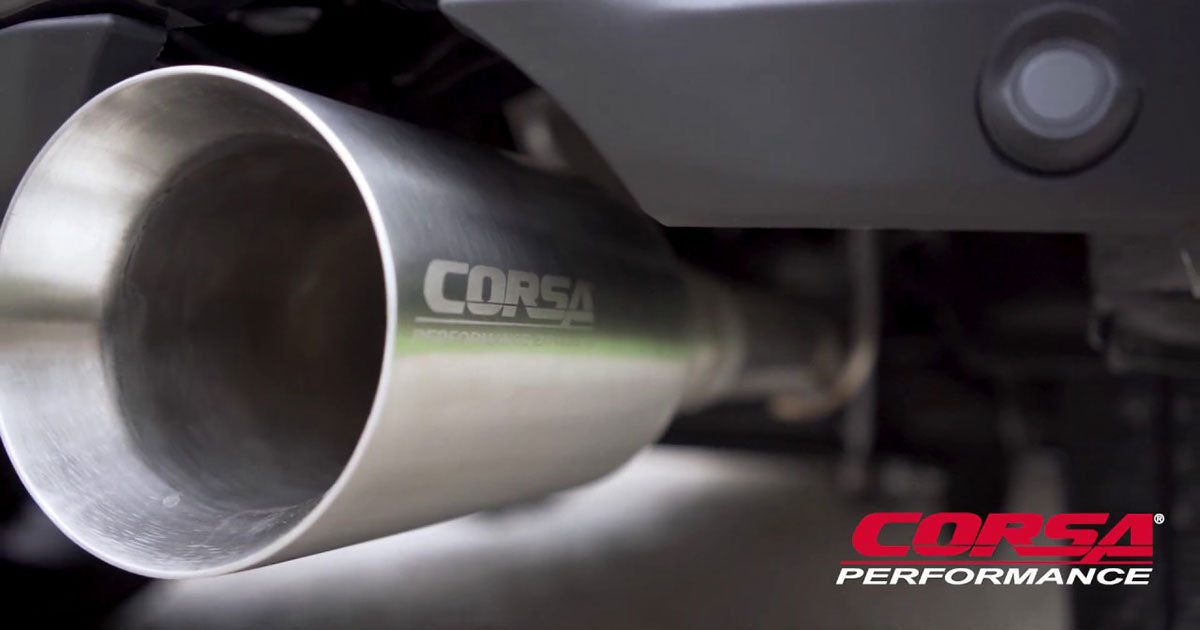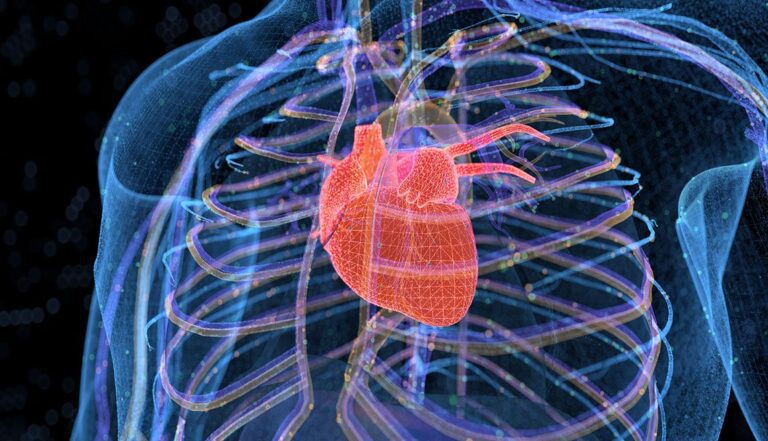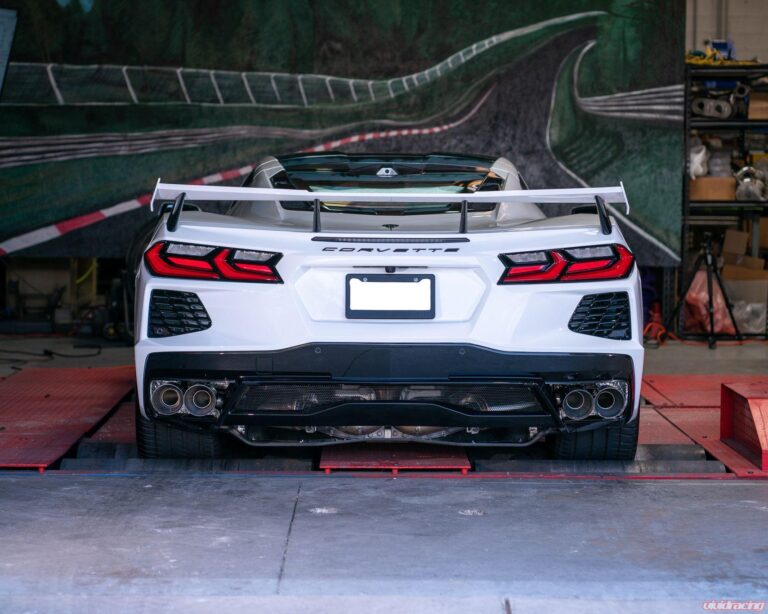Exhaust Replacement: The Ultimate Guide to Boosting Performance
Exhaust replacement involves replacing the worn-out or damaged exhaust system of a vehicle with a new one. It is necessary to ensure proper functioning of the vehicle and to meet emission standards.
The exhaust system plays a crucial role in reducing noise and harmful emissions from the vehicle’s engine. Over time, the components of the exhaust system, such as the muffler, pipes, and catalytic converter, can wear out or become damaged. When this happens, it is important to have the exhaust system replaced to maintain the performance and efficiency of the vehicle.
In addition, a faulty exhaust system can cause increased noise, decreased fuel efficiency, and may even lead to a failed emission test. Therefore, timely exhaust replacement is essential to keep your vehicle running smoothly and to minimize environmental impact.

Credit: www.fastcar.co.uk
The Importance Of Exhaust Replacement
Exhaust replacement is a crucial aspect of maintaining optimal performance for your vehicle. Over time, the exhaust system can become damaged or worn out, affecting both the performance and efficiency of your engine. Upgrading your exhaust system can result in a variety of benefits, such as:
- Improved Performance: A new exhaust system can help to increase horsepower and torque, providing a noticeable boost in overall performance.
- Enhanced Fuel Efficiency: A well-functioning exhaust system ensures that your engine runs efficiently, improving fuel economy and reducing emissions.
- Reduced Noise Pollution: A damaged exhaust system can often result in loud and unpleasant noises. By replacing it, you can enjoy a quieter ride.
- Longevity: Upgrading your exhaust system with high-quality components can extend the lifespan of your engine by reducing stress and preventing further damage.
It is important to keep an eye out for signs that indicate the need for exhaust replacement. These may include increased noise, decreased performance, reduced fuel efficiency, and visible damage. By addressing these issues promptly, you can ensure that your vehicle continues to run smoothly and efficiently.
Types Of Exhaust Systems
Exhaust systems are an essential component of any vehicle, contributing to its overall performance and efficiency. When it comes to exhaust replacement, there are different types of systems available in the market. One option is stock exhaust systems, which come pre-installed by the manufacturer. These systems are designed to meet standard requirements and are generally cost-effective. However, they may have some limitations in terms of performance and customization. On the other hand, aftermarket exhaust systems offer a wide range of options for vehicle owners. These systems are designed to enhance performance, improve fuel efficiency, and provide a unique sound experience. Aftermarket exhaust systems are available in various materials, such as stainless steel and titanium, offering durability and resistance to corrosion. They also come in different configurations, such as cat-back, axle-back, and header-back. It’s important to understand the different types of aftermarket exhaust systems available and choose one that best suits your needs and preferences. Whether you’re looking to boost your vehicle’s performance or simply upgrade its aesthetics, exploring aftermarket exhaust options can give you the flexibility and customization you desire.Selecting The Right Exhaust System For Your Vehicle
Selecting the right exhaust system for your vehicle involves considering several factors. The first factor to consider is the vehicle type and engine size. Different vehicles require different exhaust systems to ensure proper fit and performance. Performance goals and desired sound are also important factors to take into account. If you’re looking for improved performance, you may want to consider a system that offers increased horsepower or torque. Additionally, some exhaust systems are designed to provide a specific sound, ranging from deep and aggressive to more subtle. Another factor to consider is your budget and the longevity you desire from the exhaust system. Depending on your budget and preferences, you can explore different exhaust material options such as stainless steel, titanium, or carbon fiber. Each material has its own benefits in terms of durability, weight, and appearance. By considering these factors, you can select an exhaust system that is compatible with your vehicle, meets your performance goals, and fits within your budget.
| Factor | Description |
|---|---|
| Vehicle Type and Engine Size | Different vehicles require different exhaust systems to ensure proper fit and performance. |
| Performance Goals and Desired Sound | Consider if you’re looking for improved performance or a specific sound. |
| Budget and Longevity | Take into account your budget and the desired longevity of the exhaust system. |
| Exploring Different Exhaust Material Options | Consider materials such as stainless steel, titanium, or carbon fiber. |
By carefully considering these factors, you can make an informed decision when selecting an exhaust system for your vehicle.
Installation Process And Tips
htmlPreparing Your Vehicle for Exhaust Replacement:
Before starting the installation process, it is important to prepare your vehicle for exhaust replacement. Safety precautions should be taken to ensure a smooth and secure replacement. Remember to wear protective gloves and eyewear to avoid any potential accidents or injuries.
Removing the Old Exhaust System:
Once you are ready to begin, start by removing the old exhaust system. Use a wrench to disconnect the bolts and carefully detach the system from the headers. It is advisable to spray some lubricant on the bolts before attempting to remove them, as this can make the process easier.
Step-by-Step Guide to Installing a New Exhaust System:
Now that the old exhaust system is removed, it’s time to install the new one. Follow these step-by-step instructions to ensure a proper installation:
- Begin by aligning the new exhaust system with the headers. Make sure it is positioned correctly.
- Secure the exhaust using the provided clamps or bolts. Tighten them with a wrench to ensure a secure fit.
- Double-check the alignment and make any necessary adjustments.
- Connect the exhaust to the headers, ensuring a tight seal.
Finishing Touches and Double-checking for Proper Installation:
Once the new exhaust system is installed, it’s important to check for any leaks or loose connections. Start the vehicle and listen for any unusual noises. Inspect the entire system for any signs of leakage or poor alignment. Make any necessary adjustments to ensure a proper and secure installation.
Maintaining And Troubleshooting Your Exhaust System
Proper maintenance is crucial for the longevity and performance of your exhaust system. Regular cleaning and inspection are essential to ensure optimal functioning. Make sure to remove any dirt or debris that may have accumulated as it can affect the system’s efficiency. Lubricating the mechanical components helps prevent excess friction, ensuring smooth operation. Additionally, it is important to protect the exhaust from environmental damage, such as extreme temperatures and moisture, which can lead to rust and corrosion. To troubleshoot common issues, identifying and addressing leaks promptly is essential. Furthermore, addressing rust and corrosion promptly is crucial to prevent further damage to the system. Lastly, resolving unusual noises and vibrations is necessary to maintain a quiet and comfortable driving experience.
Frequently Asked Questions Of Exhaust Replacement
Can You Drive With A Bad Exhaust?
You can drive with a bad exhaust, but it’s not recommended. A bad exhaust can affect your vehicle’s performance, fuel efficiency, and emissions. Additionally, it may be illegal and pose a safety risk.
What Does Replacing The Exhaust Do?
Replacing the exhaust improves vehicle performance, reduces noise, and increases fuel efficiency. It also helps in reducing harmful emissions, meeting environmental standards, and preventing damage to other engine components.
Is It Worth It To Replace Exhaust?
Replacing the exhaust is worth it if it is damaged or old, as it improves your vehicle’s performance and fuel efficiency. It also reduces emissions, prevents potential safety hazards, and maintains the resale value of your car. Consider getting a professional assessment before making a decision.
How Often Should I Replace My Exhaust?
You should replace your exhaust system generally every 5-7 years or if you notice any signs of damage or excessive noise. Regular inspections can help identify any issues that require immediate replacement. Keeping your exhaust in good condition is crucial for optimal vehicle performance and reducing emissions.
Conclusion
When it comes to exhaust replacement, it is crucial to prioritize the health and performance of your vehicle. By recognizing the signs of a failing exhaust system and taking prompt action, you can ensure a safe and efficient driving experience.
Remember, regular maintenance and inspections are key to preventing costly repairs down the line. Trusting a professional mechanic to handle your exhaust replacement will guarantee a job well done. So, don’t delay, tackle those exhaust issues and get back on the road with confidence!







